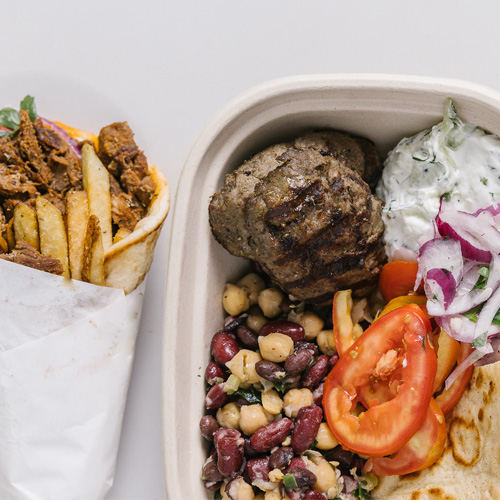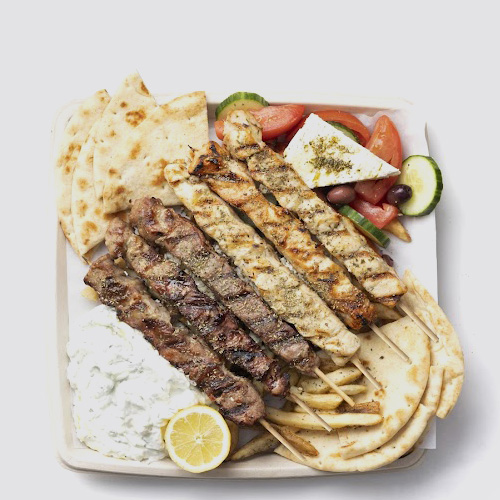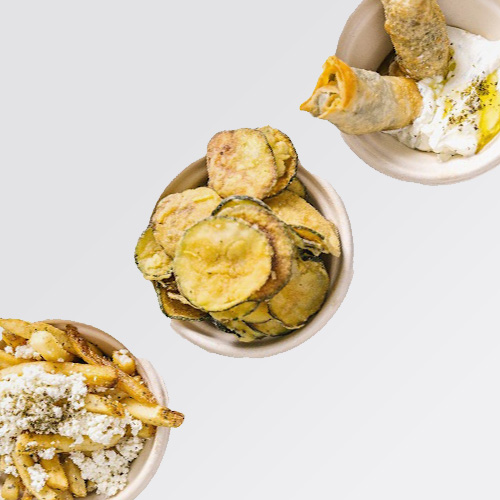Authentic Greek Food at the Burlington Mall
Authentic Greek Food at the Burlington Mall
Greco Truly Greek is so excited to have a location in the Burlington Mall — be sure to visit us. We offer a wide range of Greek fast-casual cuisine. There’s the American version of Greek food, then there’s us. Whether you want a classic gyro or a plate with proteins and sauces, we have options for everyone. Pitas are served with your choice of protein wrapped with hand-cut potatoes. Plates are served with your choice of protein with pita bread and choice of one side. Our sides include french fries, zucchini chips, lemon pilaf, bean salad, or a Greek slaw.
Don’t forget to finish off your meal with delicious Greek donuts. Please read for some of our favorite options at Greco in the Burlington Mall.
Greek Pitas and Plates in the Burlington Mall
Our plates and pitas are built with authenticity — showcasing the power of locally sourced ingredients. Here are some of our pitas and plates that we recommend you try. View more options on our full menu.
- Pork Gyro: pork gyro, onion, tomato, and tzatziki
- Chicken Gyro: chicken gyro, tomato, and honey mustard
- Lamb Gyro: lamb gyro, onion, tomato, and tzatziki
- Bifteki: ground beef, onion, tomato, and spicy feta
- Loukaniko: pork and leek sausage, onion, tomato, and honey mustard
Delicious Greek Salads at the Burlington Mall
If you’re looking for something refreshing this summer, don’t hesitate to stop by our store in the Burlington Mall to enjoy one of these salads, served with your choice of protein, sauce, and pita bread.
- Horiatiki: tomato, cucumber, onion, olives, feta, Greco olive oil, and tzatziki
- Cretan: arugula, mixed beans, sun-dried tomatoes, pickled onions, and white wine vinaigrette
- Greek Caesar: romaine, crispy chickpeas, mizithra, and yogurt lemon dressing
- Sauces: tzatziki, spicy feta, charred eggplant, lemon yogurt, and skordalia
Shareable Greek Food at the Burlington Mall
Do you want something a little extra for lunch? Are you looking for an excellent place to get lunch for the office? Sharing with friends and family? Our feasts are precisely what you’re looking for.
- Lamb Chop’s feast: three lamb chops, horiatiki salad, Greco fries, pita bread, and tzatziki
- Mixed Grill feast: pork and chicken gyro, two bifteki, two loukaniko, two lamb chops, Greco fries, spicy feta, tzatziki, tomato, onion, and served with pita.
- Souvlaki feast: three chicken souvlaki, three pork souvlaki, Greco fries, horiatiki salad, tzatziki, tomato, onion, and pita bread
Visit Greco Truly Greek at the Burlington Mall
Be sure to visit us at the Burlington Mall on the Lower level next to Common Craft and across from Fogo de Chao. Visit our website or download our app to order online today.





